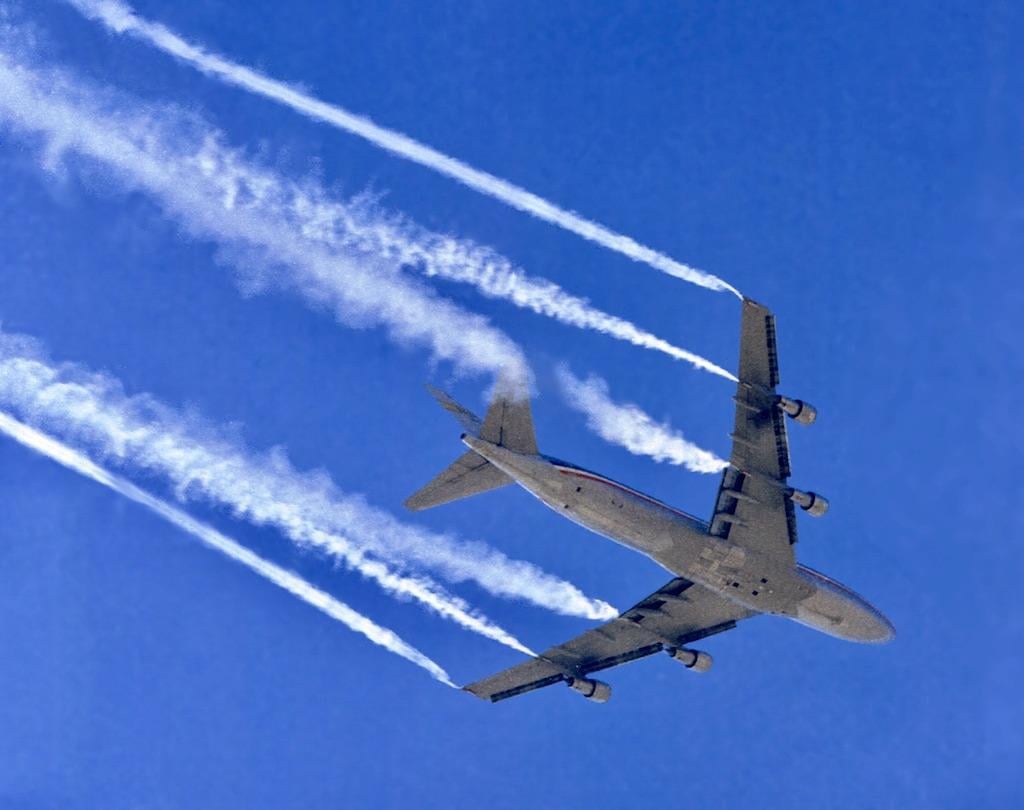
A NASA 747 utilized to transport the Space Shuttle was used for a study of trailing wake vortices. Six smoke generators were installed under the wings of the 747 to provide a visual image of the trailing vortices.
This article ran in three parts. Links to Parts 2 and 3 are at the bottom of this part.
There is a common misperception that vortices are not a factor during cruise flight. While the majority of wake turbulence encounters occur during terminal phases of flight, a Flight Safety Foundation study by this author found that 13% of NASA Aviation Safety Reporting System (ASRS) wake turbulence reports occurred during high-altitude cruise flight.
The unique characteristics of a wake turbulence encounter at altitude can cause an elevated risk to the aircraft occupants as well as the structural integrity of the aircraft. The following ASRS report is indicative of a “Cross-Track Penetration.” This occurs when the trailing aircraft crosses another aircraft’s wake at a sharp angle.
“Our company’s Gulfstream IV departed Teterboro, New Jersey, on a routine night trip to Fort Myers (FMY), Florida, with a crew of three and two passengers, the company’s chairman and his wife. The trip was CAVU with smooth air… At approximately FL250 south of Sarasota on the arrival, Miami Center advised us we might see traffic crossing from right to left, 757 traffic enroute to Miami. We spotted the 757 cross so far ahead that we did not bother to acknowledge visual contract. Suddenly at about 15,000 feet and 300 knots, we hit what I thought was another aircraft, or we had an explosion on board the aircraft. The shock was something I have never experienced in my 19,964 hours of flight time or in any other physical encounter. It felt like we hit a 20-foot thick concrete wall at 300 knots.”
The jolt to your aircraft during a cross-track encounter will be short-lived but severe, depending on your aircraft speed, wing loading, and wing sweep angle. This ASRS report also reveals the unanticipated trauma to unprotected cabin crew and passengers from these encounters.
“Fortunately, we had completed the descent in range checklist. We were harnessed and the cabin seat belt sign was on. Everything in the cockpit that could move, did—manuals, clipboard, maintenance record, etc., even the steel approach plate holder secured on the yoke came up and hit me in the face. I thought we had a momentary total power failure, but that was not the case. We slowed to 200 knots because we were still unsure of damage to the Gulfstream. I went back to check on the cabin and passengers, and upon opening the door all the horror of total disaster was there. Debris was everywhere, broken china, smashed crystal glassware, silverware, even the stowed tray tables had lifted out of the side cabinets and traveled around the cabin. More importantly, the flight attendant was injured and the chairman’s wife lay on the floor in severe pain. Both had been jettisoned to the ceiling then slammed to the floor in a microsecond. I called ahead for an ambulance and asked approval for special handling priority for medical emergency. The chairman’s wife 12th and 14th vertebrae were broken and total recovery took a full year. The flight attendant was treated and released with severe bruises.” [NASA ASRS report no. 265754. December 1993.]
High-Altitude Risk Factors
Several factors have increased the number of high-altitude wake turbulence encounters in recent years. This includes the establishment of RVSM (Reduced Vertical Separation Minimum) in which aircraft in opposing directions are separated vertically by 1,000 ft. Data analyzed by Eurocontrol found that about one-quarter of high-altitude wake encounters involved aircraft in level flight with 1,000 ft. of vertical separation.
Second is the increase in air traffic volume. The risk of encountering a wake vortex increases quadratically with an increasing number of movements. In essence this means that a 20% increase in traffic would result in a 44% increase in wake vortex encounters.
Third, the enhanced precision of navigation thanks to satellite-based GPS means that aircraft on routes such as the North Atlantic tracks are now precisely following the same lateral path with very little horizontal deviation.
The fourth factor is the substantial weight of aircraft in higher altitudes. Aircraft in the “Heavy” category can generate wake vortices strong enough to induce severe wake turbulence.
The fifth factor is the evolution of the air traffic mix which now includes “Very Light Jet” and “Super Heavy.” The diversification of the air traffic mix with the introduction of medium, light and very light aircraft will further increase the risk associated with high altitude wake turbulence encounters.
Another factor is the speed of aircraft at high altitudes. A true airspeed of 460 ktas equates to covering just over 15 nm in a mere two minutes. An analysis of wake turbulence encounters above FL285 by Eurocontrol found the most significant encounters are reported within a distance of 15 nm but some have occurred at 25 nm.
Encountering Wake Turbulence At High Altitude, Part 2
Encountering Wake Turbulence At High Altitude, Part 3





